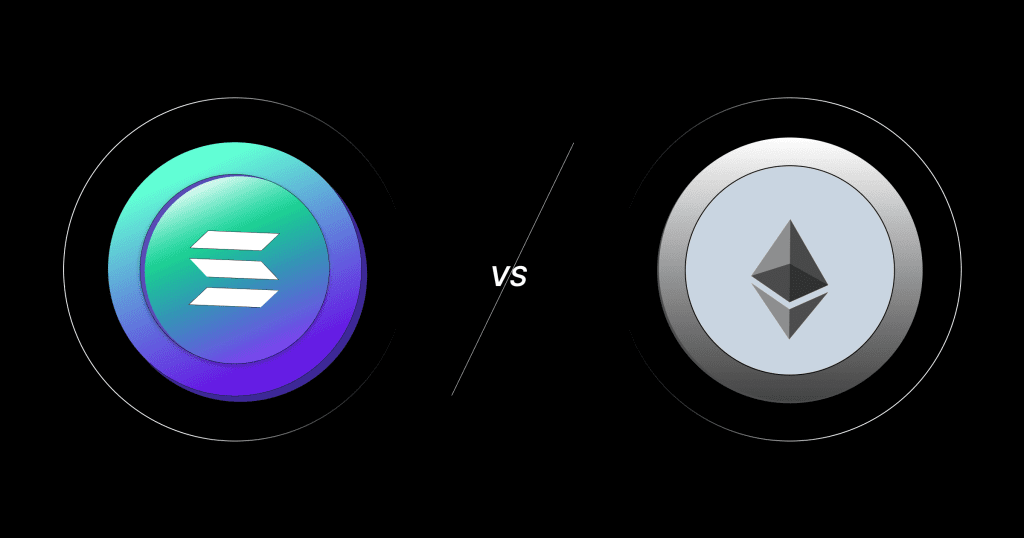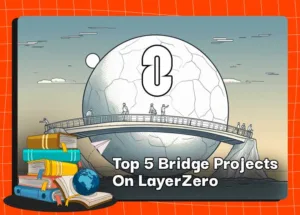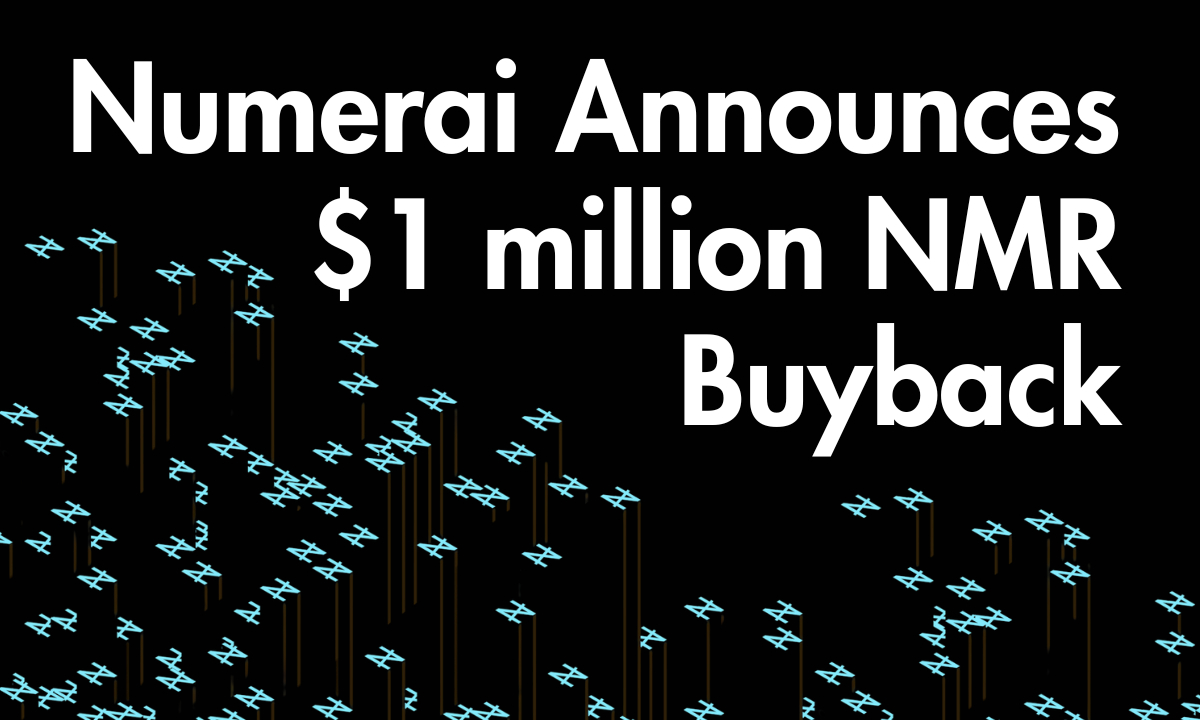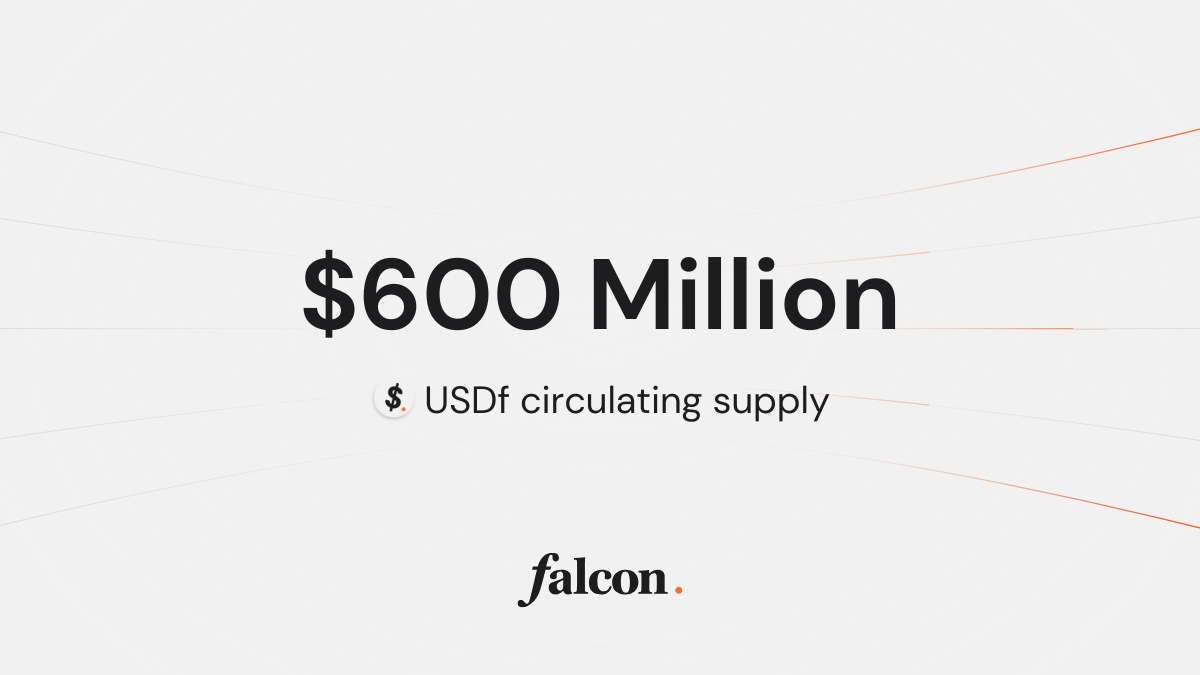Discerning the disparities between Solana vs Ethereum is paramount for traders seeking enhanced trading outcomes and a deeper comprehension of the market. Both platforms offer a versatile programming environment for dApp (decentralized application) developers to craft applications and tokens. Yet, upon closer examination, distinctive features emerge, setting the two projects apart. Let’s learn more about this topic with Coincu.

But first, we have to get an overview of what Solana and Ethereum are.
Overview of Solana
What is Solana?
Solana, the groundbreaking monoblock blockchain platform, has swiftly risen to prominence since its inception in 2017, earning its reputation as the world’s first web-scale blockchain. Developed by Solana Labs, the platform boasts exceptional speed and performance, attracting a burgeoning user base globally. Read More

Read more: What Is Solana Crypto And How Great It Is?
Highlights of Solana
- Proof of History (PoH)
- Tower Byzantine Fault Tolerance (BFT)
- Gulf Stream
- Turbine
- Sealevel
- Pipelines
- Cloudbreak
- Archivers
Solana’s unique clock, PoH, streamlines transaction ordering by encrypting them with chronological information. This eliminates the need for nodes to meticulously check the order of transactions, leading to faster verification and substantial computational cost savings.
A tailored version of practical Byzantine Fault Tolerance, Tower BFT, enhances consensus mechanisms by leveraging Proof-of-History. This eliminates the need for continuous communication between nodes, accelerating transaction verification speed and ensuring network integrity.
With knowledge of the Node Leader in advance, Gulf Stream facilitates direct transmission of user transactions to the selected validator. By eliminating the mempool, Gulf Stream reduces node load, enhancing transaction speed, and streamlining the transaction selection process.
Turbine’s algorithm breaks down block data into smaller fragments, expediting data transfer to validators. This innovation enhances the efficiency of Solana’s data processing capabilities.
Sealevel, an innovative engine enabling parallel transaction processing, Sealevel ensures Solana’s scalability horizontally. Its utilization of the Berkeley Packet Filter enhances processing speed, aligning with hardware upgrades to further boost horizontal processing capabilities.
Serving as Solana’s data distribution system, Pipelines pre-determine the transmission of block data to nodes, optimizing transaction verification speed. This ensures swift data delivery to nodes, consequently accelerating verification processes.
Engineered to enhance scalability, Cloudbreak, combined with Proof-of-History, facilitates rapid retrieval of account states for validators. This occurs even before transactions are encrypted and included in a block, showcasing Solana’s commitment to efficiency.
Solana’s Archivers function as the backbone of the system, storing the entire blockchain. These nodes play a crucial role in maintaining chain information, with each archiver storing a specific segment of transaction history.
Read more: Top 6 Solana Native Projects By Category
Solana’s development potential
Solana’s native cryptocurrency, SOL, has witnessed a significant surge in value, driven by its revolutionary approach to scalability through a hybrid consensus algorithm. The integration of the PoH consensus algorithm with the underlying proof-of-stake (PoS) consensus algorithm has propelled the Solana network’s transaction processing capabilities to an impressive 50,000 transactions per second.
This breakthrough in scalability has not only distinguished Solana blockchain within the cryptocurrency landscape but has also contributed to SOL’s rising market capitalization, positioning it among the top coins, according to data from CoinMarketCap. Analysts, such as Bank of America’s Alkesh Shah, recognize the immense potential inherent in Solana’s blockchain. Read More
Read more: Best Solana NFT Marketplaces In 2024 You Should Know
Over view of Ethereum
What is Ethereum?
Ethereum, a groundbreaking blockchain distributed computing platform, is reshaping the landscape of digital transactions and contracts through the implementation of smart contract functionality. Launched at the end of 2013 by visionary Vitalik Buterin, Ethereum stands as an open-source platform built on blockchain technology, allowing for the execution of smart contracts with automatic enforcement when predefined conditions are met, eliminating external interference. Read More

Read more: Top Ethereum Native Projects By Category
Highlights of Ethereum
- Smart Contracts
- Participation in ICOs
- Cryptocurrency Trading
- Decentralized Applications (dApps)
- Decentralized Autonomous Organizations (DAOs)
- Ethereum Virtual Machine (EVM)
At the core of Ethereum’s functionality lies the power of smart contracts. This revolutionary capability allows for the seamless development and deployment of contracts, ensuring that terms written within them are automatically enforced when specified conditions are met. Ethereum’s open-source platform serves as a fertile ground for the creation and execution of these smart contracts, eliminating the need for intermediaries.
Ethereum actively engages in Initial Coin Offerings (ICOs), providing a unique avenue for fundraising through electronic currencies. ICOs serve as a popular method for projects in their early stages, offering an opportunity for investors to contribute in exchange for project-specific tokens. Typically transacted in Bitcoin or Ethereum, ICOs allow investors to anticipate a return on investment (ROI) as the project evolves—a concept reminiscent of crowdfunding or initial public offerings (IPOs).
Ethereum facilitates seamless trading with other cryptocurrencies, presenting investors with the potential for substantial profits. In a market teeming with alternative tokens, known as Altcoins, Ether emerges as a key player for swift and straightforward transactions. The volatile nature of these Altcoins, with values fluctuating dramatically, underscores the importance of strategic investment in the crypto market.
Ethereum serves as a breeding ground for Decentralized Applications (dApps), independently deployed software not confined to a single server. These applications are stored in a distributed manner across decentralized repositories and can be crafted in any programming language. Ethereum’s commitment to decentralization empowers developers to innovate without the constraints of centralized systems.
The Ethereum network supports Decentralized Autonomous Organizations (DAOs), entities operated by members adhering to predefined rules encoded in code. Members wield voting rights, enabling them to influence pivotal decisions within the organization. This democratic structure reflects Ethereum’s commitment to decentralization and community-driven governance.
Essential to Ethereum’s network participation is the installation of Ethereum Client software, such as Geth or Parity, by nodes. These nodes run a virtual machine program called Ethereum Virtual Machine (EVM), responsible for executing smart contracts. Developers keen on building decentralized applications (dApps) utilize the Solidity programming language to deploy smart contracts, unleashing the full potential of Ethereum’s capabilities.
Ethereum’s development potential
The evolution of the Ethereum ecosystem is propelled by the collaborative efforts of pivotal organizations that contribute significantly to its development and adoption. Here, we shed light on three key entities at the forefront of steering Ethereum’s progress:
Established as a non-profit organization in 2014 and headquartered in Switzerland, the Ethereum Foundation is a driving force in shaping the features of the Ethereum Blockchain.
Devoted to the ongoing development and enhancement of the Ethereum ecosystem, the foundation plays a crucial role in addressing challenges and fostering innovation within the blockchain space. With a commitment to transparency and community-driven initiatives, the Ethereum Foundation stands as a pillar supporting the growth of Ethereum.
Dedicated to promoting and expanding the use of Ethereum blockchain technology across all businesses, the Enterprise Ethereum Alliance (EEA) is a pivotal organization driving the mainstream adoption of Ethereum.
By fostering collaboration between industry players, EEA aims to establish Ethereum as a go-to solution for businesses seeking to leverage the benefits of blockchain technology. Through standards development, education, and outreach, EEA facilitates a conducive environment for enterprises to integrate Ethereum seamlessly into their operations.
At the forefront of Ethereum’s technological ecosystem, ConsenSys stands as a key player, wielding influence over Ethereum and the broader cryptocurrency landscape.
Functioning as the parent company of Metamask, Infura, and CodeFi, ConsenSys provides essential incubation tools and applications for projects running on the Ethereum platform and other EVM (Ethereum Virtual Machine) chains. This comprehensive approach positions ConsenSys as a vital contributor to the development and sustainability of the Ethereum ecosystem.
Currently, Ethereum is guided by a triad of entities—the Ethereum Foundation, a vibrant community of developers, and a committed group of stakeholders. The collective aim is to overcome the blockchain trilemma, a challenging hurdle often referred to as blockchain’s impossible trinity. This involves finding solutions to scalability, security, and decentralization issues, paving the way for Ethereum’s widespread adoption.
Solana vs Ethereum: Key differents
Solana vs Ethereum: Ecosystem
Solana’s appeal lies in its scalable infrastructure and rapid transaction processing capabilities, making it a preferred choice for high-performance blockchain applications. Within its burgeoning ecosystem, projects such as Serum and Mango Markets have gained considerable traction. These initiatives highlight the versatility and potential inherent in Solana’s architecture.
Strategic partnerships have been instrumental in propelling Solana’s growth. Collaborations with industry leaders, including Chainlink, a decentralized oracle network, and Serum, the decentralized derivatives exchange, exemplify the commitment to fostering innovation. These partnerships not only enhance the security and reliability of Solana-based applications but also contribute to an enriched user experience.
As the pioneer in smart contract platforms, Ethereum continues to uphold its position as a robust ecosystem for decentralized applications, DeFi protocols, and NFT marketplaces. Renowned projects like Uniswap and Aave, showcase Ethereum’s role as a facilitator of innovative financial activities within its expansive ecosystem.
The Ethereum Enterprise Alliance (EEA), along with collaborations with industry giants like ConsenSys and Chainlink, has been pivotal in fostering a collaborative environment. These partnerships play a crucial role in driving the adoption of Ethereum-based solutions and propelling the growth of decentralized finance.
Within the Ethereum ecosystem, OpenSea stands out as the largest NFT marketplace, enabling secure transactions of digital assets like artwork, collectibles, and virtual real estate through Ethereum-based tokens. OpenSea’s popularity has contributed significantly to the NFT craze, showcasing the transformative potential of blockchain in digital ownership and provenance.
In the Solana camp, projects like Serum and Mango Markets highlight the platform’s capabilities in providing advanced trading solutions. The decentralized nature of these initiatives aligns with the broader trend towards democratizing finance and promoting user autonomy.
Solana vs Ethereum: Development
Solana burst onto the scene amidst the 2017 crypto boom, founded by the visionary Anatoly Yakovenko. Anchored by a team of tech stalwarts, including CTO Greg Fitzgerald, with experience at Qualcomm and Dropbox, Solana set out on a mission to redefine blockchain capabilities.
The period from 2018 to 2019 witnessed Solana’s strategic crowdfunding and private funding endeavors, accumulating a staggering $20 million. This financial boost became the catalyst for expanding the Solana ecosystem. March 2020 marked a milestone as the Solana mainnet officially went live, signaling its readiness to transform the crypto landscape.
In the earlier days of the crypto market’s evolution in 2013, Vitalik Buterin, a seasoned Bitcoin advocate, envisioned a decentralized future. Ethereum was born out of this vision, aiming to streamline the execution of protocols across decentralized networks.
Ethereum’s launch was accompanied by significant fanfare, hosting one of the largest ICOs of its time in 2014, securing a remarkable $18 million from over 11,000 investors. This moment marked the inception of Ethereum’s ascent to power. Within four short years, Ethereum played a pivotal role in triggering the 2017 ICO frenzy by introducing the ERC-20 token standard, forever altering the crypto landscape.
While Solana vs Ethereum embarked on their journeys at different times, both platforms shared a common goal: to revolutionize blockchain technology. Solana’s strategic funding rounds and the launch of its mainnet in 2020 showcased its commitment to pushing the boundaries of innovation.
On the other hand, Ethereum’s historic ICO and the introduction of the ERC-20 token standard solidified its position as a trailblazer in the industry, sparking a wave of ICOs in 2017.
Solana vs Ethereum: Purpose
Solana stands tall with a core mission: to empower developers in building sophisticated dApps. The network’s developers placed scalability at the forefront of their project, optimizing every aspect to enhance responsiveness and throughput.
The emphasis on scalability sets Solana apart, offering a platform where the limitations of traditional blockchain networks are surpassed. By providing an efficient and cost-effective ecosystem, Solana paves the way for a new era of decentralized applications capable of handling more extensive and complex operations.
Ethereum, from its inception, aimed to establish a reliable and secure network for dApp developers. The protocol introduced smart contract scripting functionality to blockchains, elevating the overall functionality and usability of cryptocurrencies. Ethereum’s commitment to fostering innovation is exemplified by its flexibility in supporting various programming languages.
Developers engaging with Ethereum can leverage a wide array of programming languages such as Solidity, C++, Java, JavaScript, Python, Ruby, and more.
Solana vs Ethereum: Consensus
At its core, Solana utilizes a Proof-of-Stake (PoS) system, allowing users to validate the state of the blockchain and earn rewards as validators. What makes this process unique is the combination of random selection among the top token holders in the network. This approach not only encourages participation but also adds an extra layer of decentralization.
Complementing the PoS system is Solana’s innovative Proof of History (POH) mechanism. By leveraging a timestamp system, POH enhances performance by functioning as a clock for blockchain events.
Ethereum is currently undergoing a transformative journey, steering away from its traditional Proof-of-Work (PoW) system towards a cutting-edge Proof-of-Stake (PoS) mechanism.
The transition to Ethereum 2.0 involves a meticulous conversion process, with the new consensus mechanism set to redefine the dynamics of the Ethereum blockchain. Notably, this move aligns with a broader industry trend embracing PoS systems for their energy efficiency and scalability advantages.
Solana vs Ethereum: Speed and Scalability
Solana’s speed is a testament to its robust design and innovative consensus mechanism. The protocol has undergone rigorous bench testing, achieving an outstanding 29,171 transactions per second (tps). This remarkable throughput sets a new standard in the industry, enabling Solana’s network to process a block every 2.34 seconds.
In comparison, Ethereum, while established and widely used, operates at a more moderate speed. The platform confirms around 15 transactions per second, highlighting a significant gap in throughput when compared to Solana. Ethereum’s block confirmation time of approximately 13 seconds underscores its deliberate approach to transaction validation.
Solana vs Ethereum: Native coin
SOL, the native token of the Solana network, stands out for its versatility. Holders of SOL have the opportunity to stake their tokens, engaging in a process that not only contributes to the security and functionality of the Solana blockchain but also allows them to earn passive rewards. This staking feature adds an extra layer of utility to SOL, attracting users seeking to actively participate in and support the Solana ecosystem.
On the other side of the spectrum, Ethereum’s ETH takes center stage as the native token of the Ethereum protocol. While ETH serves as a medium for transactions, its primary purpose lies in powering computations within the EVM. ETH’s significance extends beyond its role as a transactional currency, making it the cornerstone for executing smart contracts and decentralized applications on the Ethereum network.
Solana vs Ethereum: Experience
Solana, recognized for its speed and reliability, has distinguished itself by accomplishing the monumental task of creating a blockchain capable of handling a significantly higher volume of transactions compared to Ethereum.
The development team behind Solana has successfully harnessed innovation, delivering a platform that stands out for its efficiency and scalability. The ability to power thousands more transactions has positioned Solana as a robust choice for those seeking a fast and reliable blockchain solution.
On the flip side, Ethereum maintains its status as the reigning champion of the blockchain realm. Renowned for its pioneering role in smart contracts and decentralized applications, Ethereum remains the top-performing network with no visible signs of slowing down.
The Ethereum community continues to grow, attracting developers and users globally, and its resilience underscores its enduring appeal in the rapidly evolving landscape of blockchain technology.
Solana vs Ethereum: Price Prediction in 2024
Solana price
Despite recent challenges, the consensus among analysts is optimistic about Solana‘s potential for growth in the coming months. The current projections indicate a steady climb, with the cryptocurrency expected to reach $218.6 by December 2024, marking a significant uptick from its current position.
Solana enthusiasts and investors have been eagerly monitoring the market, anticipating signs of a rebound. Analysts attribute the projected recovery to a combination of factors, including ongoing developments within the Solana ecosystem, increased adoption, and broader market trends.
Ethereum price
According to the detailed technical analysis, Ethereum’s price in 2024 is expected to exhibit a broad spectrum. The minimum anticipated cost of Ethereum is projected to be $2,098, providing a baseline for potential market fluctuations. On the upper end of the scale, the analysis suggests a maximum price level of $4,810.88, signifying the optimistic outlook that some market participants hold for the cryptocurrency.
Amid this range, the average trading price for Ethereum in 2024 is forecasted to hover around $2,523.73. This midpoint serves as a benchmark, providing investors with a reference point for assessing the potential market value of Ethereum throughout the year.
Choosing between Solana vs Ethereum
The decision between Solana vs Ethereum hinges on individual use cases, preferences, and specific requirements. Each platform boasts its own set of advantages and disadvantages, catering to diverse needs within the decentralized ecosystem.
Solana emerges as a frontrunner in key areas such as transaction speed, scalability, and cost efficiency. Its exceptional performance makes it an ideal choice for applications demanding high throughput and real-time interactions.

On the flip side, Ethereum holds its ground with a well-established ecosystem, a robust developer community, and anticipated enhancements with Ethereum 2.0. The network’s strength lies in its widespread adoption and the wealth of decentralized applications already thriving within its ecosystem. Ethereum 2.0, set to address scalability concerns and reduce fees, adds another layer of appeal for those invested in the Ethereum ecosystem. Read More
Conclusion
In summary, the Solana vs Ethereum debate is nuanced, with each platform offering unique strengths. As the blockchain landscape evolves, individuals and developers must carefully weigh their priorities to determine the platform that aligns best with their goals and requirements.
| DISCLAIMER: The information on this website is provided as general market commentary and does not constitute investment advice. We encourage you to do your own research before investing. |
























